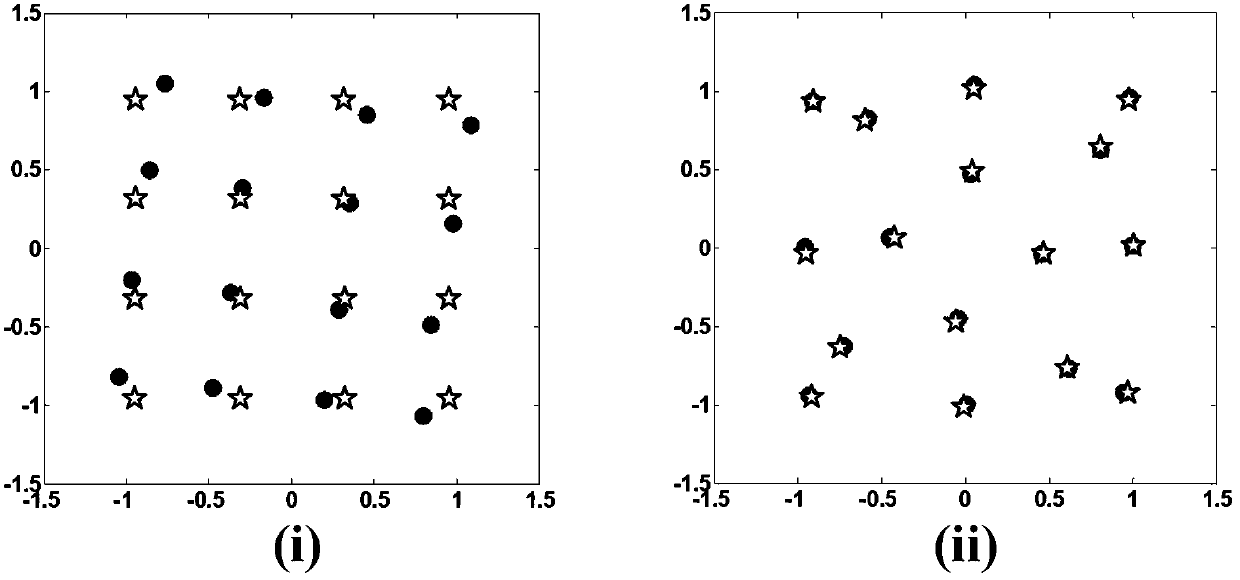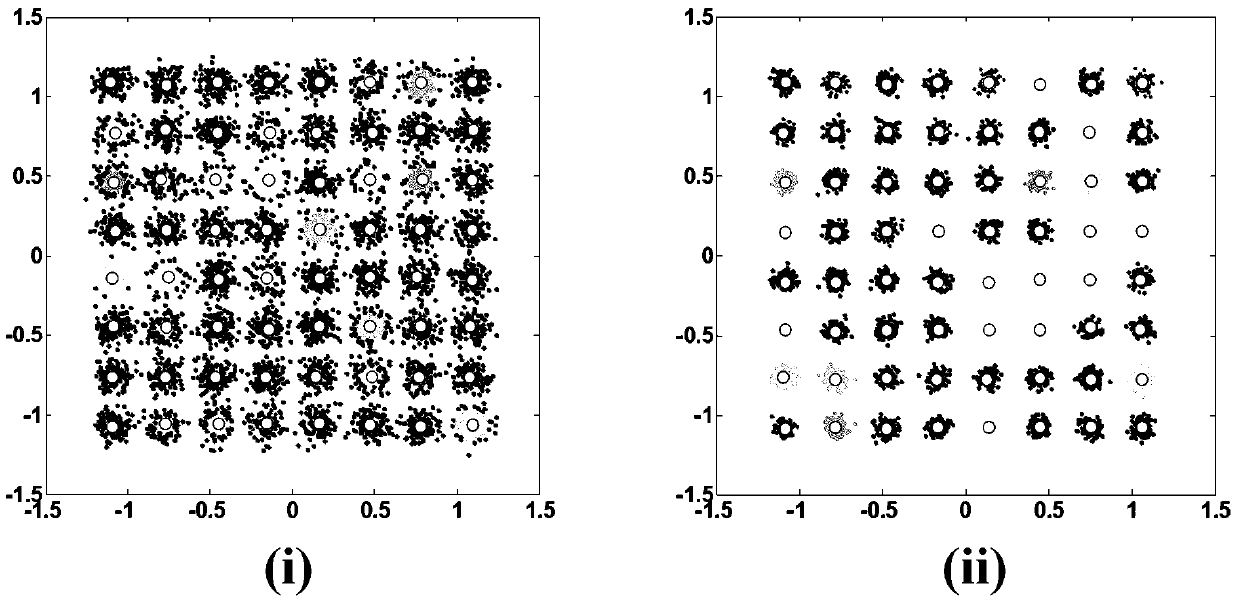Intelligent adaptive equalizer and equalization demodulation method based on machine learning
An adaptive equalization and machine learning technology, applied in carrier regulation, modulation carrier system, digital transmission system, etc., can solve the problems of different and waste of hardware resources, etc.
- Summary
- Abstract
- Description
- Claims
- Application Information
AI Technical Summary
Problems solved by technology
Method used
Image
Examples
Embodiment 1
[0069] Embodiment one: see attached Figure 4 As shown, at the receiving end of the optical network, after the received signal undergoes dispersion (CD) compensation, clock recovery, and carrier phase recovery, the method of this embodiment is used to construct an equalized demodulator for demodulation.
[0070] For an intelligent adaptive equalization demodulation method based on machine learning in this embodiment, see the attached Figure 5 shown, including the following steps:
[0071] (1) Data preprocessing. The carrier phase recovery signal is normalized based on the average energy, expressed as
[0072]
[0073] here x i is the data point, k is the number of data points, p i is the average energy of the first-class data points can be normalized.
[0074] (2) distance d ij calculate. in the dataset P i ( d ij = d ji , i j ) to calculate the Euclidean distance d ij , and calculate the distance in ascending order d ij . distance d c represents the...
PUM
 Login to View More
Login to View More Abstract
Description
Claims
Application Information
 Login to View More
Login to View More - R&D
- Intellectual Property
- Life Sciences
- Materials
- Tech Scout
- Unparalleled Data Quality
- Higher Quality Content
- 60% Fewer Hallucinations
Browse by: Latest US Patents, China's latest patents, Technical Efficacy Thesaurus, Application Domain, Technology Topic, Popular Technical Reports.
© 2025 PatSnap. All rights reserved.Legal|Privacy policy|Modern Slavery Act Transparency Statement|Sitemap|About US| Contact US: help@patsnap.com



